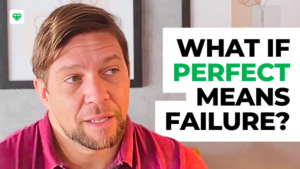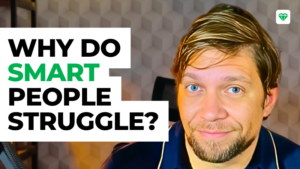In the last video, we learned how to research buyer personas using 3 techniques: research, surveys, and interviews.
That gives us the initial picture, however, buyer personas are not static beings, but they are moving somewhere and it’s your job, as a brand, to steer that movement to the bottom of your sales funnel.
To do that we need to combine buyer personas to the buyer’s journey to understand what message we need to address on each of those stages.
Because buyer personas in different buyer stages need different communication strategies.
But before we get into it…
Let’s dive in.
How to combine your Buyer Personas with a Buyer's Journey
First of all, why does that matter? And the answer is:
Buyer Personas are not static beings. They are moving somewhere. Your job is to steer that movement towards the bottom of your sales funnel.
Combining Buyer Personas with the Buyer’s Journey is a crucial step most people miss. Let’s not make that mistake.
Now, think about this for a second. The psychological journey, AKA, the buyers’ journey, is a series of touchpoints from the top of a sales funnel to the bottom of it that.
To combine buyer personas to the buyers’ journey we need to think about people in different relational stages with your brand.
So, if we have different stages in your sales funnel, we need different types of buyer personas to accommodate those funnel stages.
Does it make sense?
How many Buyer Personas your brand needs
Not 1. Not 2. But at least 3, and optimally, 5.
That range varies depending on these 3 factors:
- The size of your business.
- The number of solutions you provide.
- How diverse your target audience is.
Why is that? Because a buyer’s journey is made of at least 3 stages.
So fewer than 3 buyer personas are not enough to create one Persona for each Buyer’s Journey stage. That means you will leave potential customers outside the reach of your message.
On the other hand, having more than 5 buyer personas makes your message too complex. That would force your audience to waste too much energy to understand it.
And that will force them to leave instead of leading them to stay and convert.
Buyers Personas & Buyer’s Journey match
In the book Breakthrough Advertising, Eugene Schwartz's presents the 5 Levels of Awareness.
We’re going to use that concept to group Buyer Persona in different funnel stages. Here’s an oversimplification of these stages, going from the top of the funnel to the bottom of it.
- Unaware: People in this stage don’t know they have a problem.
- Problem Aware: People in this stage know they have a problem, but they don’t know the solution.
- Solution Aware: People in this stage know that there’s a solution for their problem, but they don’t know if there’s a product that does that for them.
- Product Aware: People in this stage know products and services to help them solve their problems. They might know your brand as one of these options.
- Most Aware: People in this stage have already bought from you. They are your customers. Your job is to keep serving and inspiring them to become Brand Advocates.
Now, here’s how we combine them: If you have 5 Buyer Personas, you should have 1 for each Buyer’s Journey stage. Simple, isn’t it?
What if you have fewer Personas? Well, in this case, we need to combine the journey stages. Here is how:
If you have 3 Buyer Personas. Combine them this way:
- Unaware / Problem Aware.
- Solution Aware / Product Aware.
- Most Aware.
If you have 4 Buyer Personas. Combine them this way:
- Unaware / Problem Aware.
- Solution Aware.
- Product Aware.
- Most Aware.
Again, why are we setting different Buyer Personas to every funnel stage?
Because, not tailoring your message to different buying stages is like throwing pieces of paper on a fan, hoping for them to fall into a small bucket.
Some will, by accident, while most will fly elsewhere.
Conclusion
Buyer personas are real people solving real problems in different situations.
To have an effective communication strategy, you need to tackle them in each of those stages.
In the next video, we will learn exactly what to offer to your buyer personas in each of those stages.




